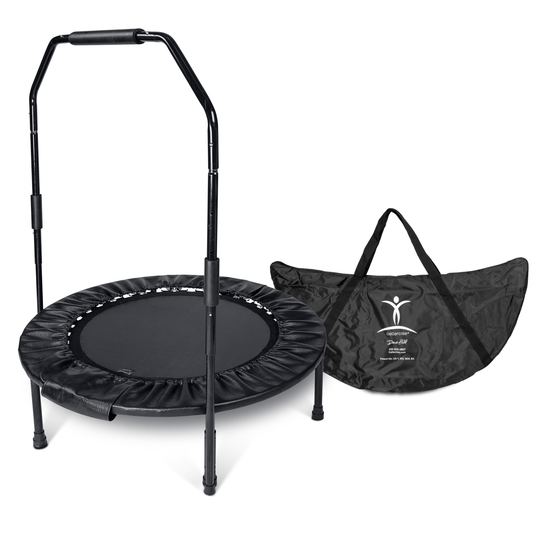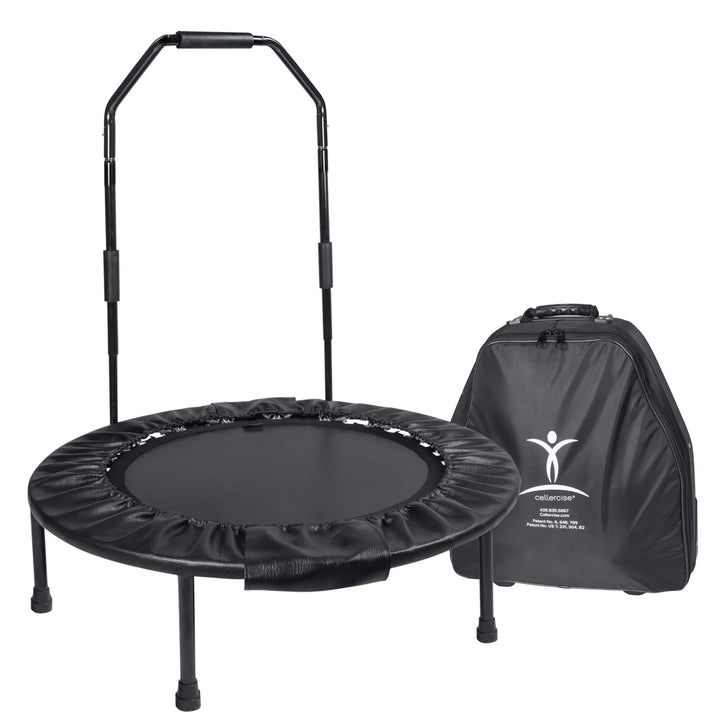Disclaimer: This Blog/Web Site is made available by the publisher for educational purposes only as well as to give general information & understanding regarding the industry. It is not to be used as specific medical advice or to replace consulting with your doctor. You should always consult with your doctor. By using this Blog / Web Site you understand that this Blog/Web Site should not be used as a substitute for medical advice from a licensed professional. For our full disclaimer, please read: Cellercise® Disclaimer
The words rebounder and trampoline tend to be used interchangeably nowadays. However, rebounders and trampolines possess a few unique differences that demand explanation for each unit’s individuality. What are the main differences between a rebounder and a trampoline, and why does it matter? We are here to answer that question for you!
Main Differences
The obvious difference between a rebounder and a trampoline is size. Rebounders tend to be smaller, more compact and portable rebounding structures. Trampolines are larger and are not intended to be portable. Once a trampoline has been set up, it tends to stay in one place until the season demands storage or the kids have become “too cool” for jumping on trampolines. Another difference is their purpose. Trampolines are often associated with children and youth recreational activities. What neighborhood hasn’t had a house with a trampoline where all of the kids gather in the summer? While trampolines still possess a positive health benefit, they are typically intended for recreational activities. Rebounders on the other hand, are specifically designed to be used for fitness routines. Rebounders are typically used for aerobic exercise routines, whereas trampolines are used for more acrobatic exercises such as flips and handsprings.
Why It Matters
The differences between trampolines and rebounders are significant. Rebounders are, as we have already discussed, smaller and therefore more portable. A rebounder can be moved from room to room, or from indoors to outdoors, weather permitting. Rebounders are also designed specifically for aerobic activity. This means that higher quality rebounders, such as Cellerciser®, will help to prevent injuries with the perfect amount of bounce in each rebounder. Rebounders that are inefficiently constructed can cause injuries due to poor spring strength or low quality mats that do not promote balance within the body. Trampolines will also provide an extra bounce that is not typical of rebounders. You will most likely bounce higher or farther when jumping on a trampoline due to the higher bouncing potential. Rebounders are typically safer because they are closer to the ground and prevent the opportunity for excessive or potentially dangerous bouncing or flips. If you’re interested in putting a bit of pep into your fitness routine, why not try our Cellerciser®? For more information, check out why Cellerciser® is the best rebounder around.
NOTE: Remember to always consult with your doctor or health professional before starting new exercise routines.
Get Your Cellerciser® and start rebounding today!














